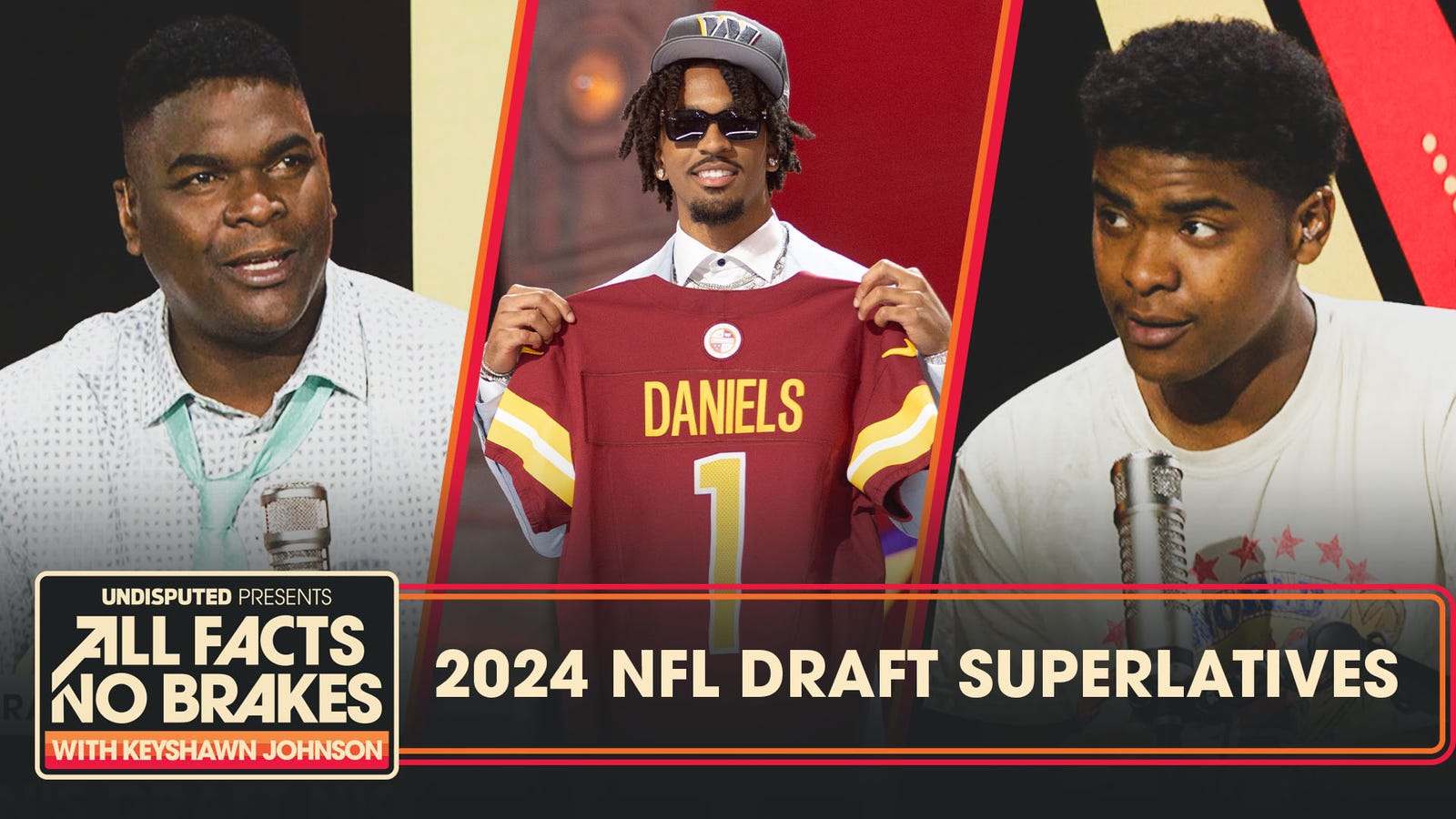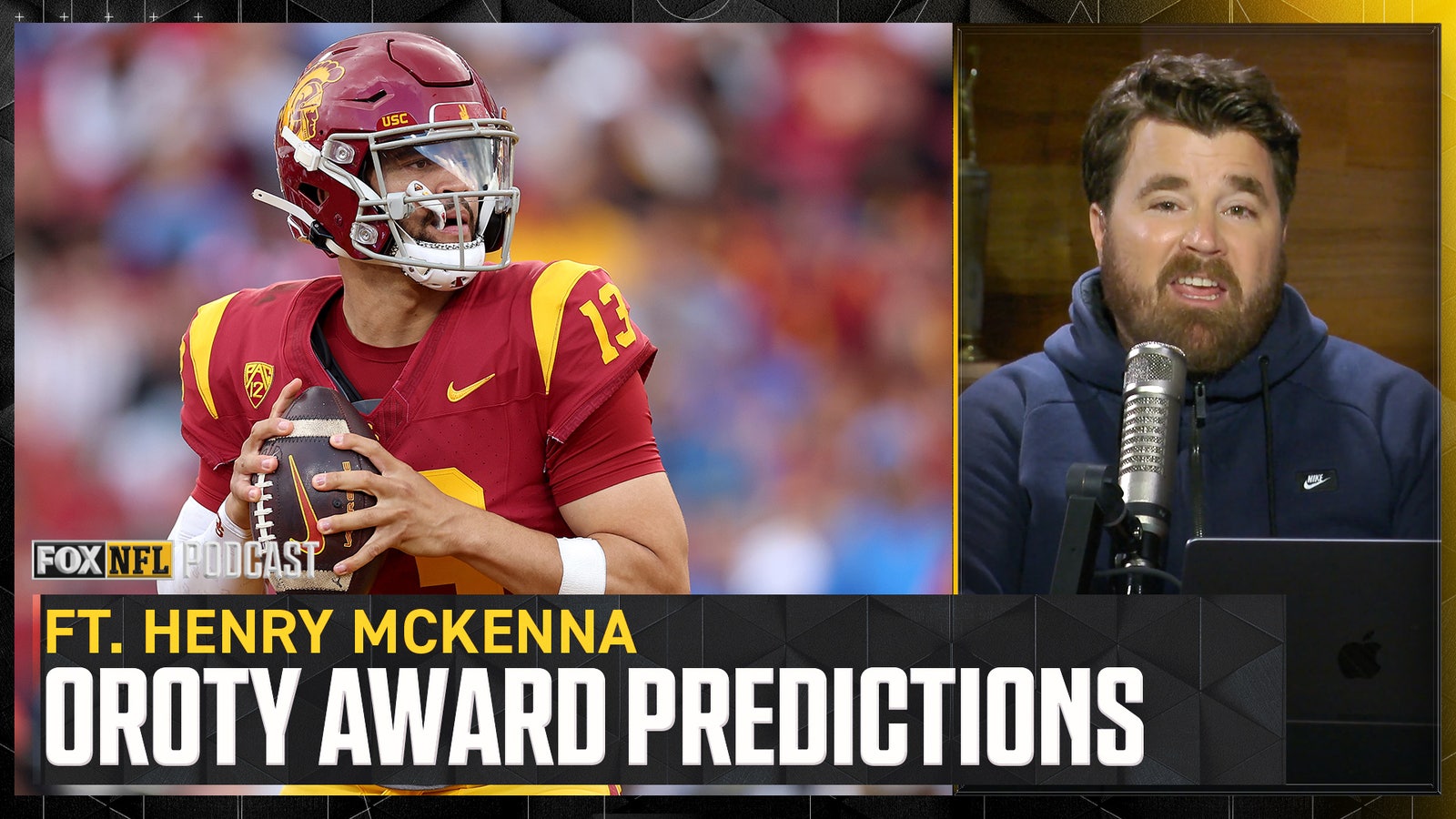Ralph Vacchiano
NFC East Reporter
Adam Peters didn’t tell many people inside the Washington Commanders organization what he planned to do with the second pick of the 2024 NFL Draft until after the draft actually began. By then, no one was surprised that he was selecting LSU quarterback Jayden Daniels.
The surprise was that nobody seemed to disagree.
“I can’t remember the last time there wasn’t some fighting about a draft pick,” said a source in the Commanders organization, “or at least some griping behind each other’s backs.
“Things sure feel different around here now.”
That might be the understatement of the century in Washington, where the new regime has rapidly remade the entire organization. Since Peters was hired in January, after spending the last three years as the assistant general manager of the San Francisco 49ers, he has changed the attitude in the Commanders building, changed the “process” of how they do business, and overhauled the roster more extensively than anyone was expecting.
So far, Peters and new coach Dan Quinn have turned over almost half the team, leaving them with the fewest returning players in the entire league. They added nine players through the draft, another 11 after it was finished. And that came after they signed an astounding 22 players in free agency, eight of whom might be starters in Week 1.
“I think we were really aggressive addressing those (needs) in free agency,” said Lance Newmark, the Commanders assistant GM. “(I’ve) really never been a part of anything like that in terms of numbers and commitments. But I thought we got really good, really fast.”
Among the many free agents the Commanders added were center Tyler Biadasz, linebacker Frankie Luvu, defensive end Dorance Armstrong, guard Nick Allegretti, backup quarterback Marcus Mariota, linebacker Bobby Wagner, kicker Brandon McManus and running back Austin Ekeler. None of them were top-of-the-market players, even though the Commanders entered free agency with more than $90 million in salary cap space — more than any team in the NFL.
That actually was the first public sign of how different things are now in Washington — a city not known for intelligent spending. The Commanders could’ve done a cannonball into the deep end of the free agent pool and come away with several of the most expensive players on the market — which could have been tempting for a new owner in Josh Harris who spent more than $6 billion to buy the team.
Instead, everything Peters has done has been sensible, with an eye on a better future, not instant success. None of the contracts he gave out were more than three years or included more than $20 million in guarantees. None of them will have any negative impact on the Commanders’ future plans.
NFL Draft Superlatives: Highest Upside, Red Flag, 1st to win Super Bowl & more

That not only helped Peters begin to fulfill a promise he made on the day he was introduced as the new GM, to “build this team the right way,” it plugged at least serviceable players into each of their many needs. And that allowed them to begin to build a base of talent, regardless of position, through the draft.
“It gave us a lot of flexibility,” Newmark said. “We were able to draft athletes. We were able to draft Commanders. We were able to draft the guys we really wanted without being kind of handcuffed to needs.”
Like in the second round, after the Commanders tried to trade back into the first round to grab a left tackle — one of their last, obvious, glaring areas of need. When that attempt failed, Peters didn’t reach for one with his next pick. Instead, with the fourth pick of the second round (36th overall), he selected Illinois defensive tackle Jer’Zhan Newton. It was a great value pick in that spot, though a bit odd considering the Commanders already have two highly paid, Pro Bowl DTs (Jonathan Allen, Daron Payne) already on the team.
“At first glance you think that it’s a pretty packed room,” Peters said. “But what I learned in San Francisco is you can’t have too many great (defensive) linemen and we’ll find a way to get them all on the field. That’s what I said to DQ, ‘Can we do this?’ He’s like ‘Yeah, we’ll find a way to get them all on the field.'”
Considering Allen is 29 and has just two years left on his contract, Newton’s greatest impact might not come for a few years. But Peters always understood that fixing the Commanders’ deep issues would be a multi-year process. He also understood that he needed more than just new players. He needed to rebuild the culture in a locker room that has experienced mostly losing for decades, not to mention the constant turmoil and controversy of playing in Washington during the Dan Synder years.
So he changed the process. And there are many examples of that, which some of the holdovers in the organization seem to find refreshing. The most high-profile example was his controversial decision to bring in 20 college prospects — including four of the top quarterbacks available in the draft — for a “Top 30” visit at the same time. That’s the visit that included the infamous group outing to Topgolf.
It wasn’t a completely new idea. It’s something the 49ers did when Peters was there. Other organizations have held group visits, too. But it’s rarely done with a group that big and the inclusion of so many top quarterbacks for a team picking near the top of the draft does seem to be unprecedented.
The move seemed to bother Ron Butler, Daniels’ agent, who appeared to criticize it on Twitter. But Peters was unbothered by that or by league-wide skepticism. From his vantage point, it worked.
“What was cool is while we got to see them all together in a group setting at Topgolf, which was really fun, and I think everyone had a great time,” Peters said. “And it was beneficial to see everybody in a more relaxed environment.”
“I thought it was a really cool dynamic seeing the organic, like how guys came together, how magnetic certain individuals were vs. others,” Newmark added. “Just that loose kind of casual feel from the one night to the next day where it was more individualized. I came away from it very impressed with the process.”
Way-too-early OROTY award predictions

There are other examples of the Commanders’ new process too. On the draft board this year, a small number of players were designated with a “Commander tag” — borrowed from the “gold helmet” designation Peters used in San Francisco. It was reserved for players, Newmark said, who “have the same kind of core beliefs and just the mentality that we believe in here. … It just gives us an indication that this is our kind of guy, you know?”
Perhaps as a result, seven of the nine players they selected were team captains — a noticeable departure from previous Commanders drafts.
Peters also began what he called the “Commanders caucus” — again borrowed from his San Francisco days, when he called it “table talk.” The “caucus” occurred at the end of Day 2 of the NFL draft, when he asked every scout and nearly every member of the scouting department to “stand on the table” and name one player they wanted to see Washington draft on Day 3, and to explain why.
“And we’re going to take a lot of notes on that,” he said. “I think when you do that, you find out who the real Commanders are that are still on the board.”
Again, that’s not a novel approach. Several NFL teams do something similar. But it was new to Washington, where many scouts previously felt like their voices were unheard.
“Those guys do seem reenergized,” said one NFC scout of his colleagues in Washington. “Quinn went out of his way to really listen to them before the draft, from what they tell me. They didn’t always get their way, but they seemed to really think (Peters) heard them too. They felt valued, which wasn’t always the case there.”
The result seems to be a deep respect for and belief in the 44-year-old Peters, despite being on the job for only four months. And it’s more than just a belief in him. It’s a belief in what he’s doing, and the way he’s doing it.
Way-too-early NFL playoff bracket & predictions

For example, when Harris bought the Commanders, he made it a priority to beef up the analytics department, hiring Eugene Shen as the senior vice president of football strategy about three months before he hired Peters. Peters, according to a team source, has leaned on the new department heavily, but not at the expense of good, old-fashioned scouting.
The choice of Daniels, he said, was made in large part because of what he saw on film. Peters said Daniels jumped to the head of the pack the first time he watched him and thought “I honestly couldn’t believe how good he was.” But he then worked with the analytics department and the scouts, according to a team source, to help confirm his choice, without ever truly revealing a preference.
That was different too. It appears that Peters’ inner circle on the most important decision of his tenure so far was limited to Quinn, Harris, and Bob Myers, the front office consultant who previously ran the NBA’s Golden State Warriors. Others, like offensive coordinator Kliff Kingsbury, were brought in along the way, according to a team source, and at least told which way Peters was leaving.
But many others — including key members of Harris’ ownership group — weren’t told until the morning of the draft. And most of the front office and scouting department weren’t told until the Chicago Bears were on the clock for the first overall pick.
That prevented leaks, which in previous years had been prevalent. Some in the organization even thought Peters might have been leaning towards Michigan quarterback J.J. McCarthy, who reportedly was his second choice. But just as importantly, it gave a chance for almost everyone involved in the process to weigh in, to feel they were a valued part of it, instead of going through the motions while assuming Peters had already made up his mind.
“It’s having an aligned vision,” Peters said. “(It’s) having collaboration, having inclusion with everybody, everybody pulling in the same direction. That’s how we did it in San Francisco and that’s what allows you to get through, not just the good times, but that’s what allows you to get through the tough times as well.”
Again, none of that is a revolutionary approach. Collaboration, building a culture, changing the thinking is the goal of every new GM that steps in and tries to overhaul a flailing franchise.
But it feels especially new in Washington, where chaos and controversy ruled for far too long. It was a place where for too often it seemed like decisions were made simply to plug holes so the people in charge could stop the ship from sinking, or maybe just save themselves.
In the end, it will be the product on the field that matters. But under Peters, it seems that they might finally have at least found a process that could work.
Ralph Vacchiano is the NFC East reporter for FOX Sports, covering the Washington Commanders, Philadelphia Eagles and New York Giants. He spent the previous six years covering the Giants and Jets for SNY TV in New York, and before that, 16 years covering the Giants and the NFL for the New York Daily News. Follow him Twitter at @RalphVacchiano.

Get more from National Football League Follow your favorites to get information about games, news and more